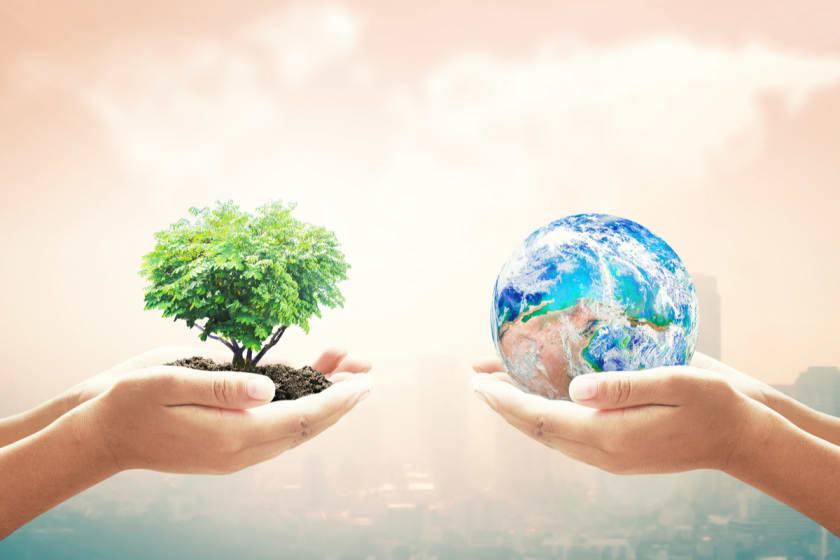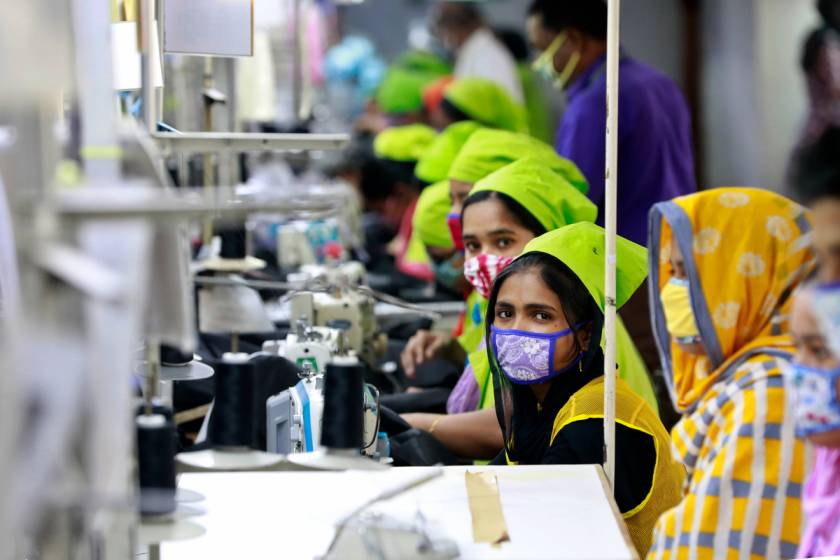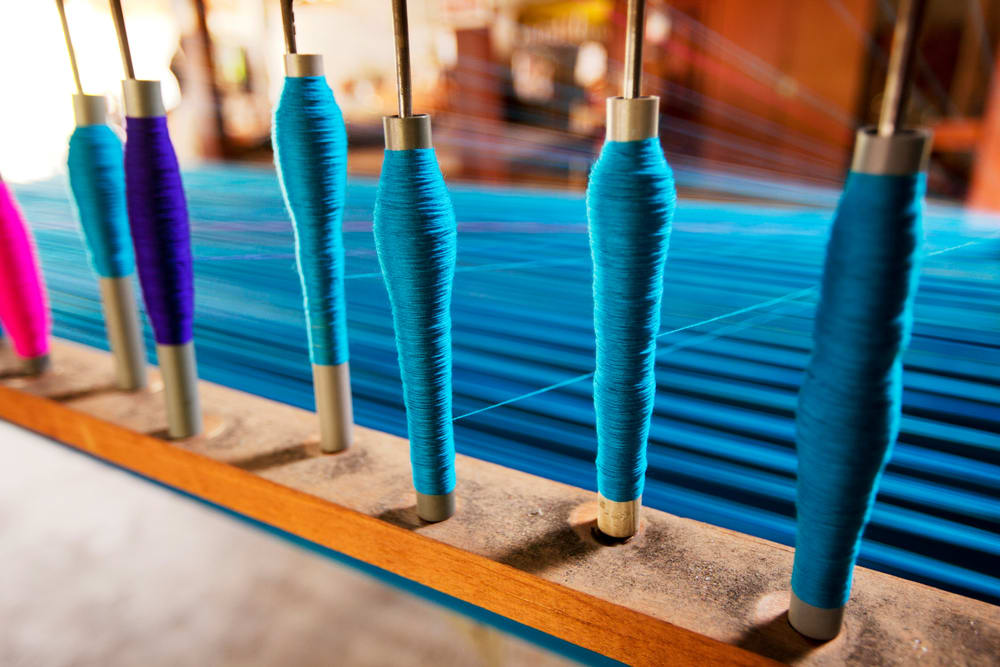Recycling Through Reverse Resourcing



Reverse resources connect manufacturers, waste handlers, and recyclers worldwide to expedite textile transfer, reuse, and recycling.
What Is the Problem?
Reverse Resources, which calls itself the "Uber of textile waste," provides a platform to link all parties in the supply chain, reducing middlemen and increasing transparency in the process. Reverse Resources has found it difficult to get a handle on the waste generated throughout the textile manufacturing process because of a lack of transparency. According to their white paper, an estimated 47% of a factory's total material purchases are pre-consumer textile waste, and prior underestimations may be due to poor waste reporting and tracking. These complex supply networks have resulted from a lack of openness, preventing a factory from determining the full worth of their waste materials, even when some of their profits come from selling their manufacturing waste.
The Solution
Increased communication between trash handlers and recyclers and better quality and tracking of recycling results from their efforts can bring down the wastage. Connecting and exchanging materials and keeping track of the material movement are made possible by their software platform. Their software also provides trash reports to industries, showing where their garbage travels and how it gets there. Recyclers can also utilise their own verification documentation to support claims for recycled certifications or standards.
This technology enhances the flow of information throughout the supply chain by increasing openness around the volume of waste created by enterprises. A direct connection between actors allows for more effective waste circulation, increasing revenues. Furthermore, Reverse Resources offers recyclers with correct material information, which may be handed to the next generation of producers by tracking garbage moving between actors.
Recycled Textiles
A garment's lifespan is generally thought to be three years on average. They are disposed of as worn-out clothing at the end of this period. Garments that were formerly functional are then discarded since they are no longer in style. According to one estimate, more than a million metric tons of textiles are thrown out each year. Old clothes are dumped in the trash instead of being recycled and repurposed. Textiles account for around 3% of the household waste weight. Textile wastes are also generated during the manufacturing of yarn and fabric, garments, etc. Post-industrial waste is used to describe these materials after they have been processed. Fabric recycling and repurposing are possible with all this discarded apparel. Sourcing through alternate channels, repurposing and reverse resourcing can help bring down the wastage significantly. However, only 25% of textiles currently discarded can be recycled and repurposed, compared to an 80% recovery rate. Only 5% of the clothing that is thrown away is recycled.
Process of Reusing Materials

Every piece of cloth can be repurposed. Natural, synthetic, and hybrid fabric clothes are categorised and graded. Clothing of high quality is donated to non-profit organisations and resold. Rags are made out of unwearable textiles in the factory since they are deemed to be damaged textiles. The wiping and flocking industry uses discarded rags. Fabric Recycling and filling can be done with other materials. Recycled fibres from used clothes can be used to create new clothes. By re-weaving new clothing or blankets can be made from the fabric threads. This method works with both natural and synthetic fibres. Also, type and colour are used to categorise incoming textiles.
Moreover, shoddy fibres are made by shredding the raw material. Shoddy is afterwards combined with different fibres depending on the intended application. Finally, the carded and the spun yarn is ready for weaving or knitting.
Car insulation fillers, roofing felts, loudspeaker cones, furniture padding, and panel lining are only some of the applications of this garment being shredded into powder form. Woollen clothes are transported to companies that recover and recycle the fibres to make yarn and fabric. Recycled cotton clothing is utilised in various industries, including paper production, car manufacturing, and mining. To create new looks, fashion designers are repurposing various vintage clothes in innovative ways. There is a growing market for active sportswear produced from recycled PET plastic bottle fibres (RPET).
Textiles That Can Be Reused
Textiles can be recycled in the following two ways:
- Post-consumer goods like apparel, vehicle upholstery, and other stuff from the home or office
- Textile waste recycling from other sectors and yarn and fabric waste are two types of available pre-consumer resources
Donating old clothing is encouraged by several non-profit organisations and business programs, including Nike and Patagonia.
Why Is Textile Waste Recycling Necessary?
Increasing numbers of people are realising the value of recycling textiles. Every year, an estimated 100 billion garments are produced around the world.
Natural fibres, such as cotton, wool, and other animal and insect sources (silk), account for 35-40% of the global market for textiles. Therefore, natural fibres should always be preserved.
We need to find a solution to the problem of textile waste recycling if we want to achieve a society with zero landfills.
Natural fibres in landfills can decompose in weeks to a few years. As a result, there's a chance of methane or CO2 gas leak. Additionally, synthetic fabrics are constructed so that they do not disintegrate into the environment. As a result, a landfill site may discharge toxic compounds into the groundwater and adjacent soil, posing a health risk.
Ecologically, recyclable textiles provide the following benefits:
- Reducing the requirement for landfill space
- Avoiding the consumption of virgin fibres
- Energy and water savings
- Pollution abatement
- Decreased consumer demand for colour
Advantages of Recycling
In addition to protecting the environment, textile or fabric recycling helps reduce waste. Clothes that have been repurposed go to waste less often. Contaminated soil and groundwater are two of the most severe consequences of landfilling. When wet clothing is washed away, hazardous chemicals and bleaches are washed into the ground and groundwater. It turns out that this water is poisonous.
Wool and synthetic fibres contribute to global warming because synthetic fibres do not disintegrate as quickly as natural fibres, like wool, do. This hazard will be significantly decreased if these fabrics are repurposed. Recycled clothing does not need to be re-dyed or sourced, which reduces energy use. In addition, it is possible to reduce the production of harmful chemicals and dyes by reducing their consumption.
About 70% of the old clothing is repurposed as secondhand apparel, 6% as garbage bags and zips, 8% as fibre recovery and recycling, 7% as wiping material, and the final 9% as stuffing.
Over 70% of the world's population wears secondhand apparel – startling? Manufacturers find recycled fabrics to be a cost-effective source of raw materials.
How to Make New Garments from Old Ones?
Old clothes being repurposed into something useful is a fascinating discovery. The following are the ways to make new garments from the old ones:
- Cushions, purses, and quilts can all be made from old garments.
- Rags and dusters can be made from old clothing that has been damaged.
- In a lampshade, brightly coloured materials might be utilised for the borders.
- Fabrics with dazzling colours can be used to make head and wrist bands.
- Old clothing can be repurposed into art pieces by stitching patches, buttons, and beads into old garments, ironing images onto them, etc.
- To make headbands and bracelets, brightly coloured fabrics can be used.
The textile industry has long been a significant polluter of waterways, dating back to the early days of the Industrial Revolution. Growing environmental consciousness has prompted an increase in efforts to reduce waste. People are becoming more and more conscious of the need for waste collection and recycling. The amount of waste in landfills can be reduced by creating a market for recovered textiles and then purchasing them.
Since the Industrial Revolution, the textile waste recycling business has been recognised as a significant polluter of rivers. More people are concerned about the environment, and as a result, they are making an effort to limit trash. A growing number of people realise the need for proper garbage disposal and recycling. By acquiring recovered textiles, the amount of waste that would otherwise end up in landfills can be reduced.
There is a range of uses for polyester chips made from polyester-based fabrics that are shredded and granulated. Polyester fibres are melted and utilised to make new polyester fabrics.
Final Thoughts
The amount of fibre produced is predicted to reach 100 million metric tons in the near future, but the useful life of textile waste recycling products is dwindling. If people don't reevaluate how they spend their money, these tendencies will only get worse. Therefore, a waste management strategy should be devised to promote awareness of the need for sustainable action to reverse these trends.
An effective textile waste management strategy requires a separate collection of municipal waste and textiles. Therefore, these programs must be adopted in all countries. For example, the world's largest textile waste recycling factory in Panipat, India, recycles post-consumer waste wool and acrylic.
Fashinza is a reputed platform for manufacturing apparel. With them, the process of making apparel is pretty easy and fast. In addition to placing production orders and receiving deliveries, businesses can also use this platform to monitor progress, communicate with one another or pay for items as they are shipped.



















